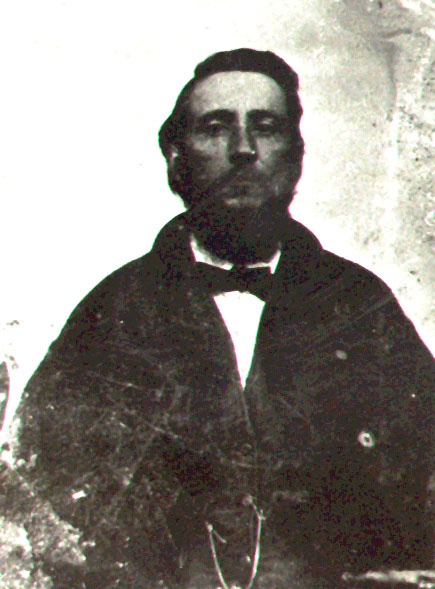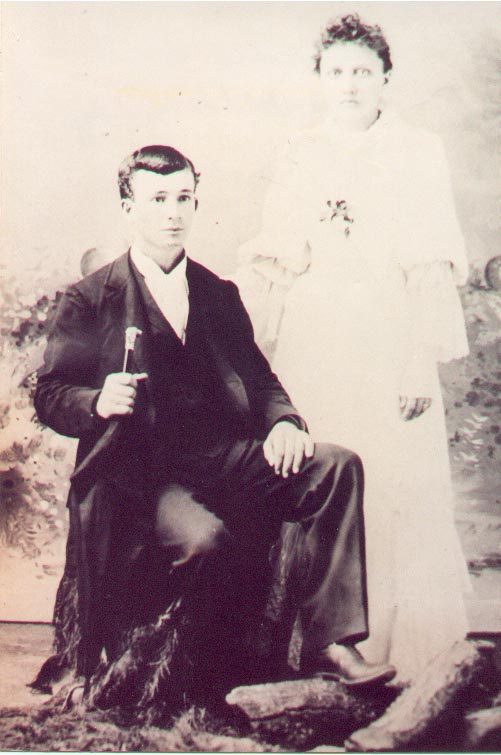Rosebud, New Mexico
Nov. 11th 1935
Dear Alvin:—
It is with pleasure I answer your most welcome letter. I am glad you are interested in school and hope you enjoy your school days as much as I did mine. Really I think our school days are our happiest days with all their troubles and trials — yes I had my share of “trouble & trial” in school even tho I never got a whipping.
When I went to school the schools were not “Graded” as they are now. We had classes — sometimes 2 or 3 of a kind, I mean of the second reader we’ll say as some pupils would have McGuffey’s Readers while others would have another kind. I used the McGuffey’s Readers. The “Old Blue-Backed Spelling Book” (Webster Spelling Book) and Alvin I don’t believe I’d be afraid to “spell” with my Grandchildren to-day.
I was eight years old April 13, 1875 and started to school some time that year, at Lewisville, Denton Co., Texas. However my Mother had taught me at home, so I was in the second reader and could spell “way over in the book” and knew how to make the figures and count.
That first school house was up on a “rise” N.W. from town about 1/2 Mi. It was a large “two story” house; the upper room was used by the Mason Lodge the lower for school church and Sunday School.
Sometimes there were 75 or so pupils so had to have two teachers, but both taught in that one big room.
We sat on long benches and a class would go up to the teacher to recite and sit on a long bench, only the spelling classes would stand in a row and “turn down”, when one missed a word. The pupil who was head of class to day would “go foot” tomorrow.
The house was heated by a stove and they burned wood. When it was real cold the teacher would let us go sit awhile by the stove to warm our feet. They wouldn’t let us draw pictures in time of books.
When I started to school my Grandma gave me a large square framed slate and that’s what I wrote on, and “figured” & (played when the teacher wasn’t looking.)
In 1879 we moved way out to Wise Co. I was 12 by then, you see so had other books to study such as Geography — Monteith’s Third Part. Rag’s Third Part Arithmetic and Grammar — Smith’s, I believe, was the first one I used; then later Reed & Kellogg’s. So we had to parse and diagram. Yes that was hard.
That school house was a real country school about 3 or 4 Mi. S.W. of Bridgeport (the old town) Texas, in Pleasant Valley. It was built of logs (I believe) and had long home-made benches. No black-boards, so we used slates.
There was a plank “desk” on each side to write on, the boys used one, the girls used the other. Yes, we had a time to write, some had bought copy books, others used “fools cap” paper and the teacher would set a “copy”. It too had a stove and burned wood. The house was in the woods so we had lots of shade to play in.
The boys played on one side of the house, the girls on the other. The boys at both these schools played ball and other similar things. The girls would play games such as base “Learner Lou” etc — we had nothing to play with but always had fun.
Girls all wore sun bonnets — never went bare headed but in warm weather would go bare-footed, same as the boys — oh! the big girls didn’t, of course.
Sometimes school would be only for three months, and a five month school was a long time — I mean in the country. Then sometimes there would be a subscription school in Summer.
Sometimes the teacher would “stay a round” with the people — not have to pay board.
My first school I had to walk alone and go about three Mi. but at this last one we lived just little over 1/2 Mi. from the school house.
While we lived there tho there were two years I did not go to that school, because the teacher did not keep good order. I went to a lady who taught in her house 2 Mi. away. There we sat by a fireplace and used her chairs. She was such a fine teacher too — could explain things so we could understand even arithmetic. Also she had some different readers I used but I forget the names. Of course, they were the higher books 5th & 6th.
My letter is getting too long to tell about when I “went off” to school. So will close for this time and if you want the other part I’ll write again.
Lovingly your Grandmother,
Stella Cunningham




